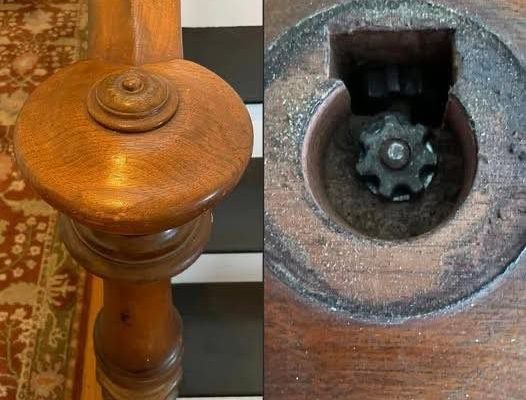A Rainy Day and a Strange Feeling
Ever get that urge to poke around your own home? Not because you’ve lost your keys — but because something just feels off? That’s exactly how it started for me. One rainy afternoon, curiosity struck, and what followed was beyond imagination.
We live in a creaky old 1866 farmhouse — the kind where floorboards groan and walls seem to whisper. My daughter and I were waiting out a storm, chatting about the secret rooms you read about in old houses — false drawers, hidden panels, and those mysterious newel posts at the bottom of stairways.
A Curious Tug
Naturally, we decided to test our luck. We tugged on the cap of our newel post, expecting nothing more than a bit of dust. Instead, it popped open — revealing gears. Actual, mechanical gears.
We just stared. Gears? In a stair post? Were they part of a lock, a trigger, or some forgotten mechanism? It felt like the first chapter of a mystery novel. For a moment, I half-expected a hidden wall to swing open.
Digging Into History
That discovery sent us down a rabbit hole. We learned that hidden compartments in newel posts were once common. In the 1800s, homeowners often used them to hide valuables — keys, deeds, or heirlooms. Banks were distant, and trust wasn’t always guaranteed, so people got creative.
A hollow post made the perfect hiding spot. But the gears hinted at something more — perhaps a mechanical feature rather than simple storage.
Function Meets Mystery
Some Victorian homes featured newel posts that connected to latches or service bells, even triggering movement elsewhere in the house. Those gears in ours may have turned a cap, released a latch, or worked as part of a clever security system.



